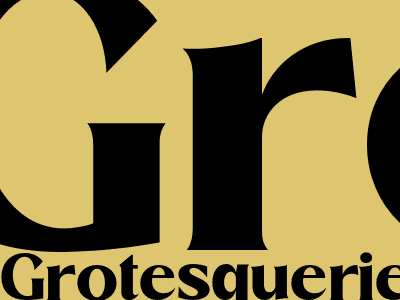
Grotesquerie Cast: Unlocking the Hidden Symbolism and Significance in Art
The Essence of Grotesquery in Art
Grotesquery, a term derived from the Italian word "grotta" (cave), refers to a distinct artistic style characterized by the depiction of bizarre, distorted, and often monstrous figures. Originating from the Renaissance period, grotesquerie emerged as a form of ornamentation found in grottoes and underground chambers.
Grotesque imagery often incorporates elements of the fantastic, the macabre, and the humorous. It challenges conventional notions of beauty and harmony, embracing the grotesque as a means of artistic expression.
Symbolism and Significance of Grotesque Figures
Portrayal of the Human Psyche
Grotesque figures serve as visual metaphors for the hidden recesses of the human psyche. Their grotesque features, such as exaggerated body parts, distorted faces, and unsettling postures, symbolize the irrational, the subconscious, and the repressed aspects of our nature.
By embracing the grotesque, artists explore the complexities of human emotion, desire, and fear, delving into the darker realms of the mind.
Critique of Society
Grotesquerie has often been employed as a tool for social commentary. Grotesque figures can embody societal flaws, vices, and injustices, serving as a satirical critique of the prevailing norms and values.
By exaggerating and distorting reality, grotesquerie exposes the absurdities and hypocrisies that lurk beneath society's polished surface.
Subversion of Tradition
Grotesque art challenges established artistic conventions, disrupting traditional notions of beauty and form. It embraces chaos, disorder, and the unexpected, pushing the boundaries of artistic expression.
By juxtaposing the grotesque with the sublime, artists create a tension that invites viewers to question the very nature of art and its role in society.
Contemporary Manifestations of Grotesquerie
Surrealism and Dadaism
In the 20th century, the grotesque resurfaced as a प्रमुख component of avant-garde art movements such as Surrealism and Dadaism. These movements sought to disrupt rational thought and explore the unconscious mind, embracing the grotesque as a means of artistic rebellion.
Grotesque in Literature
The grotesque has found its way into literature as well. From the grotesque characters of Dostoevsky's novels to the unsettling imagery in Kafka's stories, the grotesque has been used to explore the dark and often disturbing aspects of human existence.
Modern and Contemporary Art
In modern and contemporary art, the grotesque continues to thrive. Artists such as Francis Bacon, Cindy Sherman, and Kiki Smith have embraced grotesquerie to challenge societal norms, explore the human condition, and provoke viewers to confront the darker realities of life.
Conclusion
Grotesquerie, with its bizarre and unsettling imagery, offers a profound commentary on the human condition. It delves into the hidden recesses of our psyche, critiques societal norms, and challenges artistic conventions.
Whether in the Renaissance period or in contemporary art, the grotesque remains a powerful and evocative form of expression, inviting us to confront the darker aspects of life and to question the nature of reality itself.